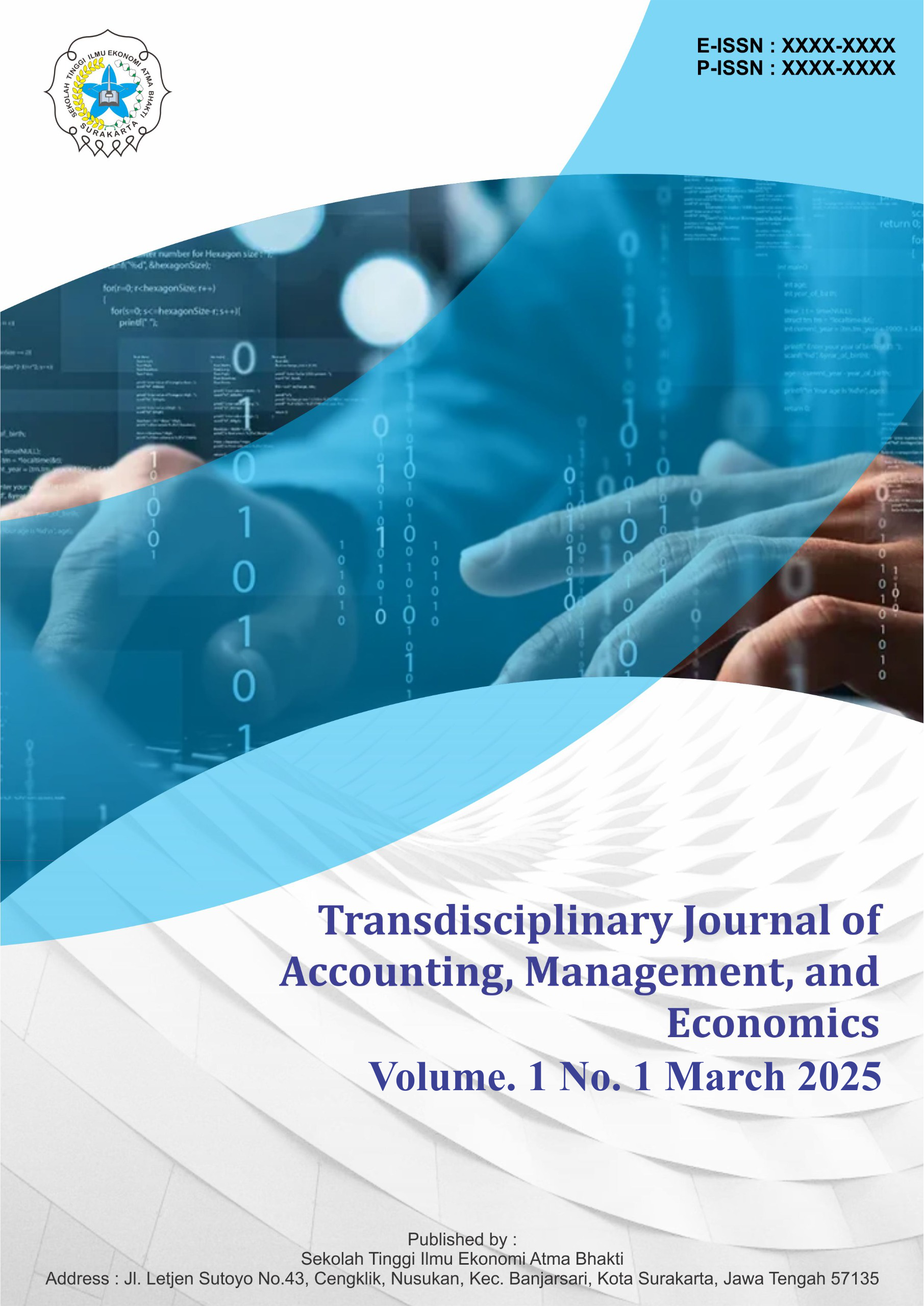Strategic Leadership and Innovation: Driving Organizational Resilience in the Post-Pandemic Economy
Keywords:
Digital transformation, Innovation, Organizational resilience, Post-pandemic economy, Strategic leadershipAbstract
The COVID-19 pandemic has profoundly reshaped global business environments, highlighting the urgent need for organizations to adapt, innovate, and build resilience. Strategic leadership has emerged as a critical factor in guiding firms through uncertainty, while innovation has proven essential in sustaining competitiveness and driving recovery. This article explores the intersection of strategic leadership and innovation as complementary drivers of organizational resilience in the post-pandemic economy.Drawing on theoretical perspectives and recent empirical findings, the study emphasizes how visionary leadership, adaptive decision-making, and a culture of continuous innovation enable organizations to navigate disruption effectively. Strategic leaders play a pivotal role in fostering innovation by encouraging risk-taking, investing in digital transformation, supporting knowledge sharing, and aligning organizational goals with dynamic market demands. Leadership that integrates innovation not only addresses immediate challenges but also strengthens long-term strategic positioning. Furthermore, the article highlights resilience as a multidimensional capability, encompassing operational agility, workforce adaptability, stakeholder trust, and long-term sustainability. In the post-pandemic context, resilient organizations are those that not only survive crises but also leverage disruption as an opportunity for transformation, growth, and value creation. This requires building robust systems, empowering employees, and cultivating partnerships that enhance collective capacity to respond to volatility.The discussion underscores practical implications for business leaders, suggesting that cultivating innovation-oriented leadership, strengthening collaborative networks, and embedding resilience strategies into core management practices are vital for sustained success. Ultimately, the findings demonstrate that strategic leadership and innovation are not merely reactive responses to crisis but essential components of future-ready organizations prepared to thrive in increasingly volatile, uncertain, complex, and ambiguous environments.
References
Bartik, A. W., Bertrand, M., Cullen, Z., Glaeser, E. L., Luca, M., & Stanton, C. (2020). The impact of COVID-19 on small business outcomes and expectations. Proceedings of the National Academy of Sciences, 117(30), 17656–17666. https://doi.org/10.1073/pnas.2006991117
Bass, B. M., & Riggio, R. E. (2006). Transformational leadership (2nd ed.). Lawrence Erlbaum Associates.
Boal, K. B., & Hooijberg, R. (2001). Strategic leadership research: Moving on. The Leadership Quarterly, 11(4), 515–549. https://doi.org/10.1016/S1048-9843(00)00057-6
Brem, A., Viardot, E., & Nylund, P. A. (2021). Implications of the coronavirus (COVID-19) outbreak for innovation: Which technologies will improve our lives? Technological Forecasting and Social Change, 163, 120451. https://doi.org/10.1016/j.techfore.2020.120451
Calantone, R. J., Cavusgil, S. T., & Zhao, Y. (2002). Learning orientation, firm innovation capability, and firm performance. Industrial Marketing Management, 31(6), 515–524. https://doi.org/10.1016/S0019-8501(01)00203-6
Carmeli, A., & Markman, G. D. (2011). Capture, governance, and resilience: Strategy implications from the history of Rome. Strategic Management Journal, 32(3), 322–341. https://doi.org/10.1002/smj.884
Creswell, J. W., & Creswell, J. D. (2018). Research design: Qualitative, quantitative, and mixed methods approaches (5th ed.). Sage.
Duchek, S. (2020). Organizational resilience: A capability-based conceptualization. Business Research, 13(1), 215–246. https://doi.org/10.1007/s40685-019-0085-7
Fornell, C., & Larcker, D. F. (1981). Evaluating structural equation models with unobservable variables and measurement error. Journal of Marketing Research, 18(1), 39–50. https://doi.org/10.1177/002224378101800104
Hair, J. F., Black, W. C., Babin, B. J., & Anderson, R. E. (2019). Multivariate data analysis (8th ed.). Cengage.
Hu, L. T., & Bentler, P. M. (1999). Cutoff criteria for fit indexes in covariance structure analysis: Conventional criteria versus new alternatives. Structural Equation Modeling: A Multidisciplinary Journal, 6(1), 1–55. https://doi.org/10.1080/10705519909540118
Kraus, S., Clauss, T., Breier, M., Gast, J., Zardini, A., & Tiberius, V. (2020). The economics of COVID-19: Initial empirical evidence on how family firms in five European countries cope with the corona crisis. International Journal of Entrepreneurial Behavior & Research, 26(5), 1067–1092. https://doi.org/10.1108/IJEBR-04-2020-0214
Lengnick-Hall, C. A., Beck, T. E., & Lengnick-Hall, M. L. (2011). Developing a capacity for organizational resilience through strategic human resource management. Human Resource Management Review, 21(3), 243–255. https://doi.org/10.1016/j.hrmr.2010.07.002
Nunnally, J. C., & Bernstein, I. H. (1994). Psychometric theory (3rd ed.). McGraw-Hill.
Rowe, W. G. (2001). Creating wealth in organizations: The role of strategic leadership. Academy of Management Executive, 15(1), 81–94. https://doi.org/10.5465/AME.2001.4251395
Schumpeter, J. A. (1942). Capitalism, socialism, and democracy. Harper & Brothers.
Teece, D. J., Pisano, G., & Shuen, A. (1997). Dynamic capabilities and strategic management. Strategic Management Journal, 18(7), 509–533. https://doi.org/10.1002/(SICI)1097-0266(199708)18:7






